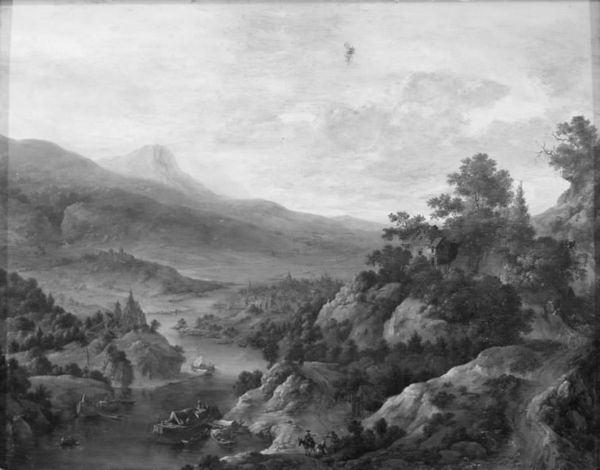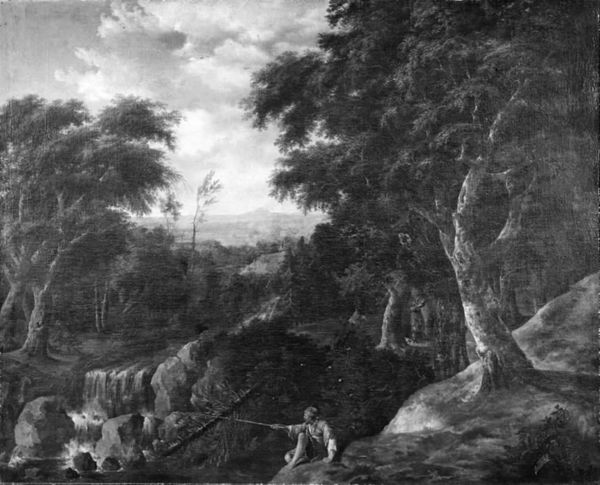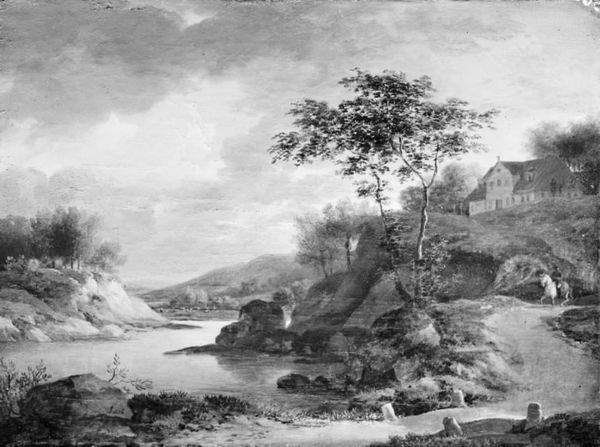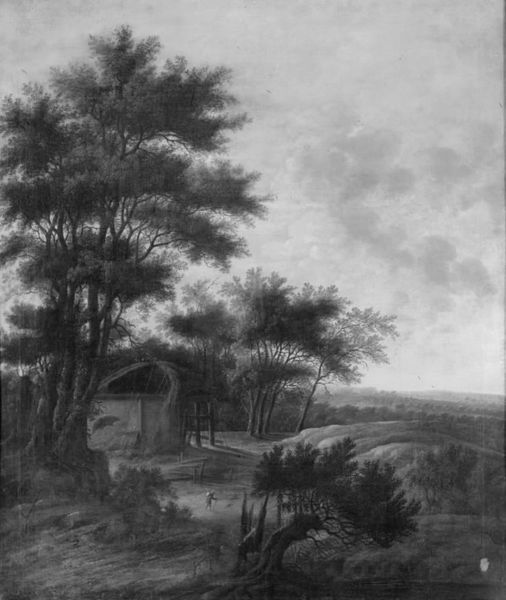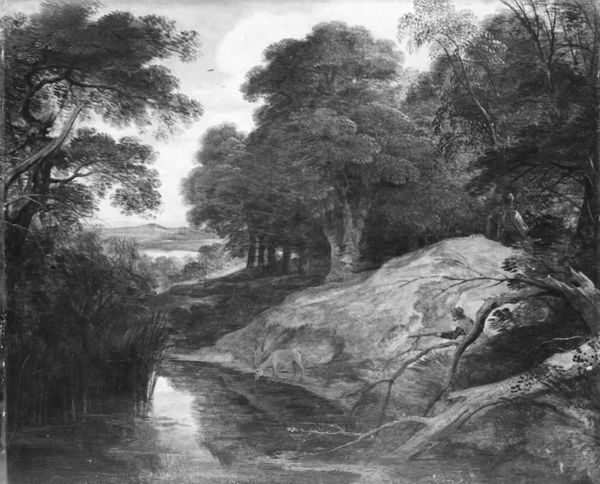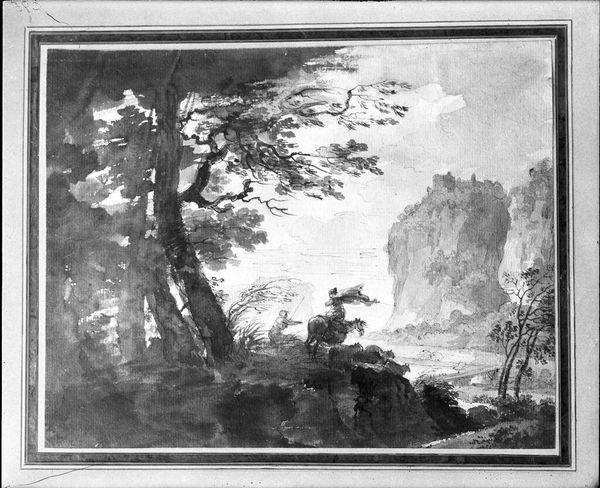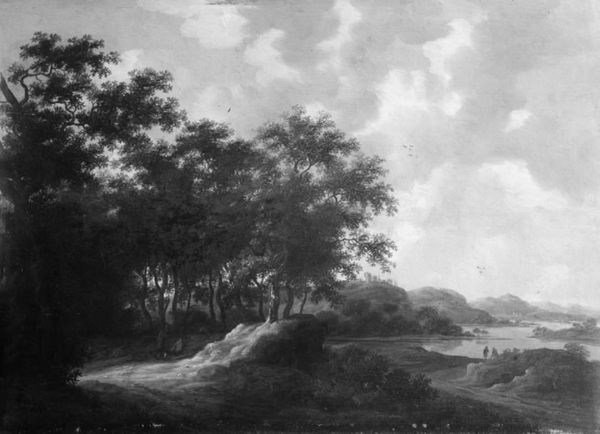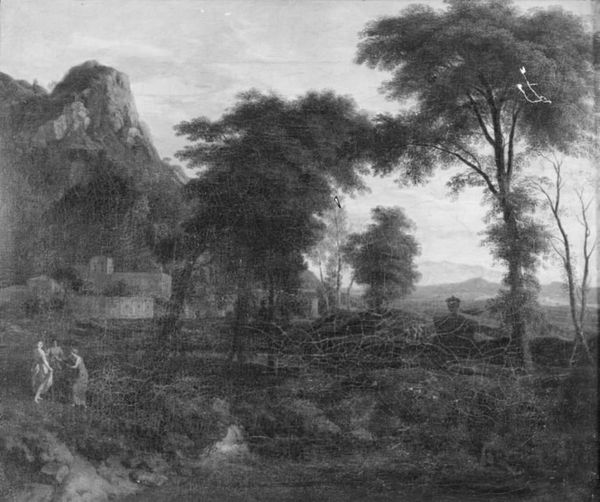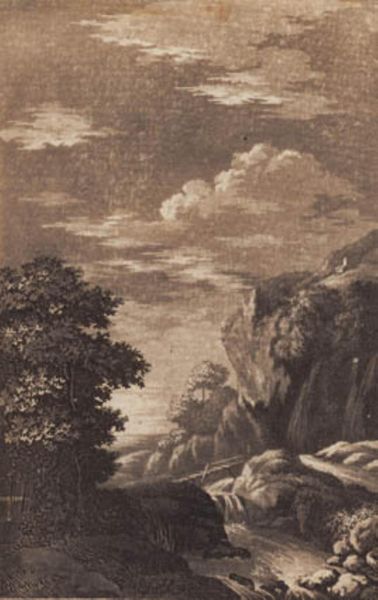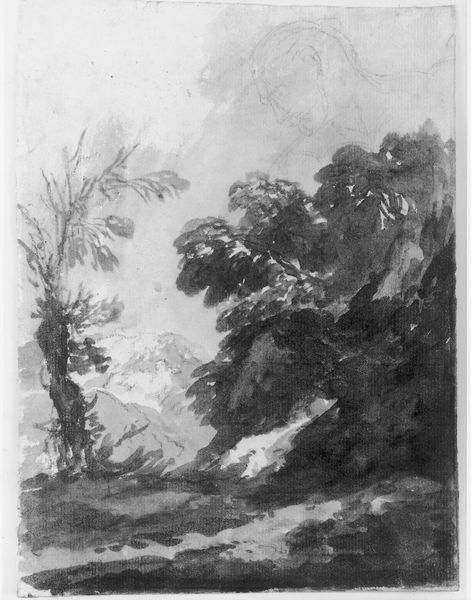
Copyright: Public domain
Curator: Just looking at this, I feel like I'm peering into a dream... or perhaps a very faded photograph. It has this strange feeling of distance, both in terms of space and time. Editor: Indeed, "Romantic Landscape," dating to 1925 and rendered in graphite and charcoal by Konstantin Bogaevsky, masterfully embodies a sense of melancholic detachment through its monochrome palette and delicate lines. Curator: It's interesting, isn't it? The way he uses the light is peculiar. Is that the moon, or the sun struggling to break through heavy cloud cover? It lends such an air of mystery to the landscape. I mean, are we seeing twilight or dawn? It has me guessing. Editor: Semiotically, that ambiguity contributes significantly. The diffuse light serves less to illuminate, and more to flatten the image into tonal areas. You observe the strong horizontality; Bogaevsky arranges trees as repoussoir elements, directing the viewer's gaze into the chasm between. The sky becomes another compositional tier. Curator: Repoussoir… You always come up with these incredible terms. I'm just here feeling the overall impression. To me, that sky almost seems… oppressive. But look closer. At a distance? There’s some sort of ruin on a cliff...almost an ethereal architectural feature that disappears into the gray of sky... It’s gorgeous in this mournful way, though! What kind of landscape invites you in, yet keeps you at arm's length? Editor: Precisely. Bogaevsky utilizes devices that evoke Romanticism’s sublime, such as scale discrepancies that make one feel lost in nature. The ruin that fades almost completely into the background can be decoded as a melancholic representation of lost civilisations. In many ways, Bogaevsky’s landscape functions as a memento mori: remember that all that seems solid fades. Curator: I always come away with something new. Each viewing presents an altered emotional reaction to the stark tones...that balance between being invited in and told to leave is just brilliant to think about! Editor: Bogaevsky leaves the careful observer plenty to interpret. I found that horizonality is such a useful tool for Bogaevsky to construct this introspective work.
Comments
No comments
Be the first to comment and join the conversation on the ultimate creative platform.
